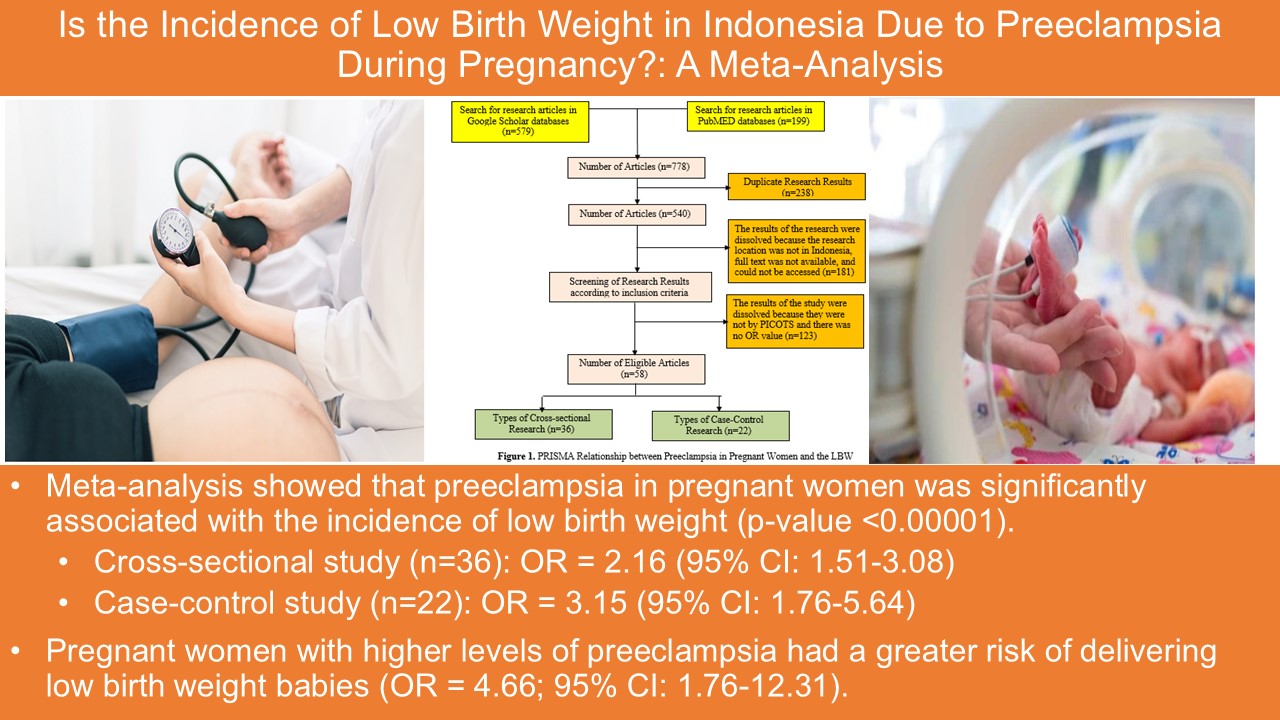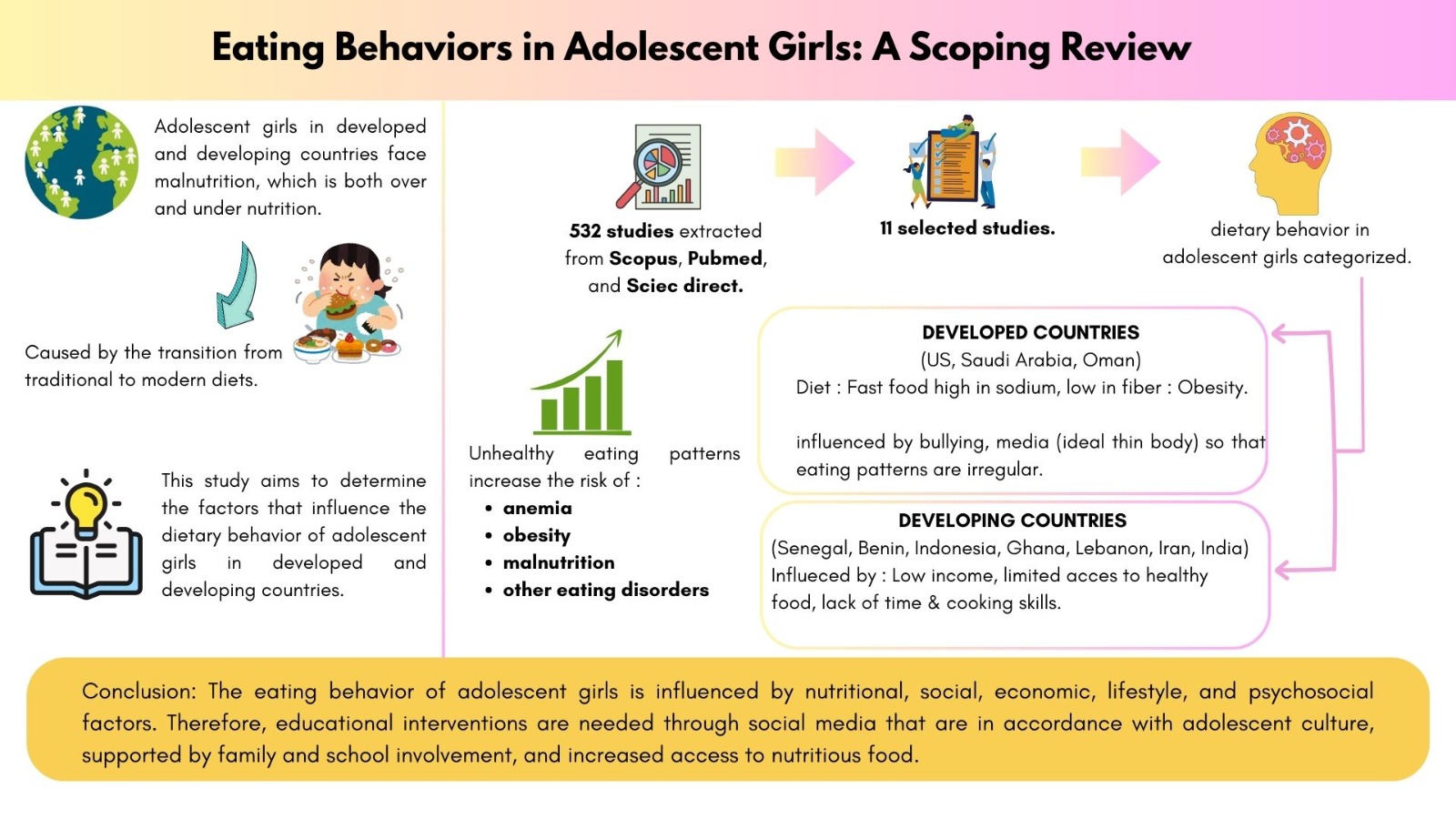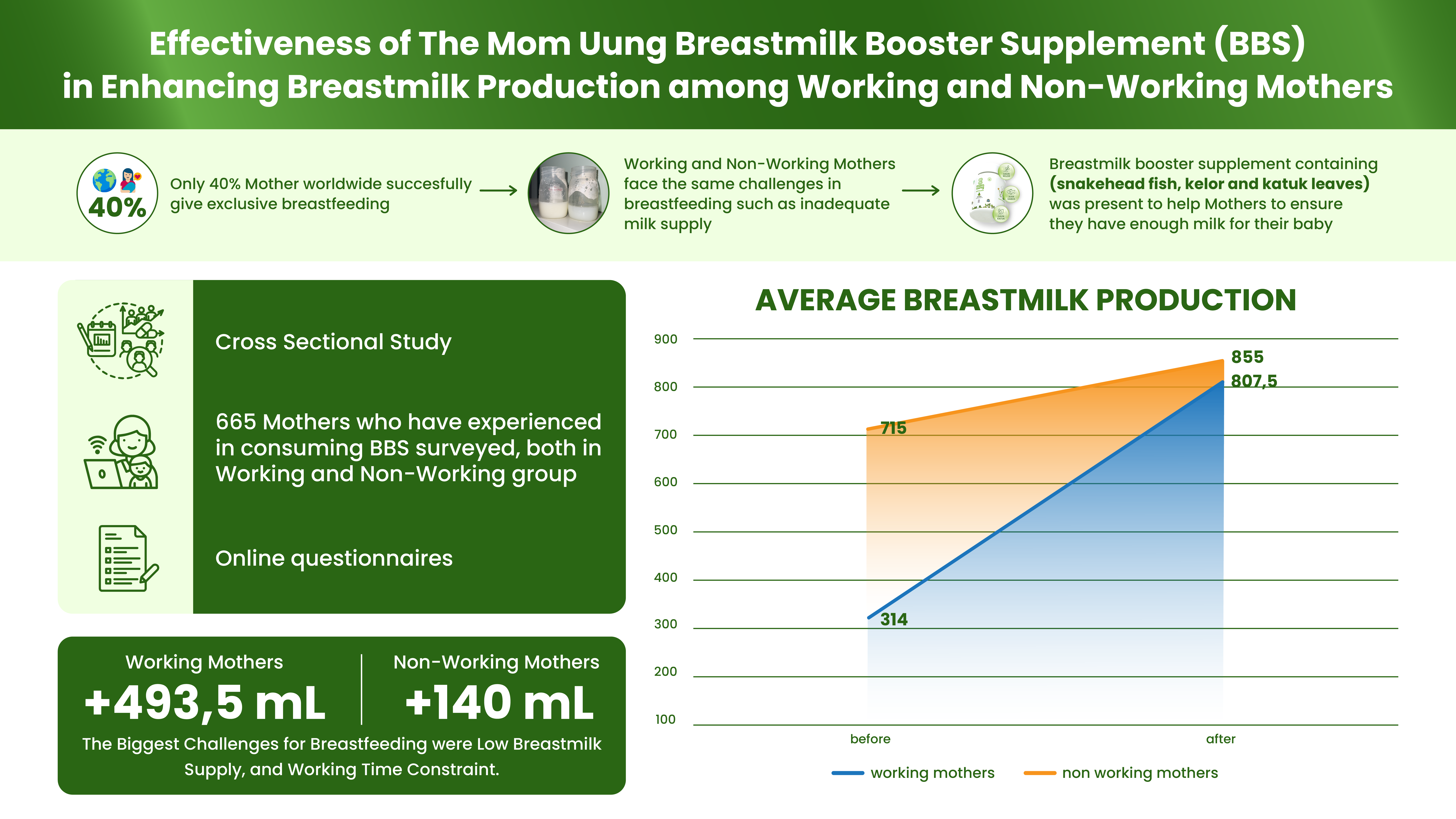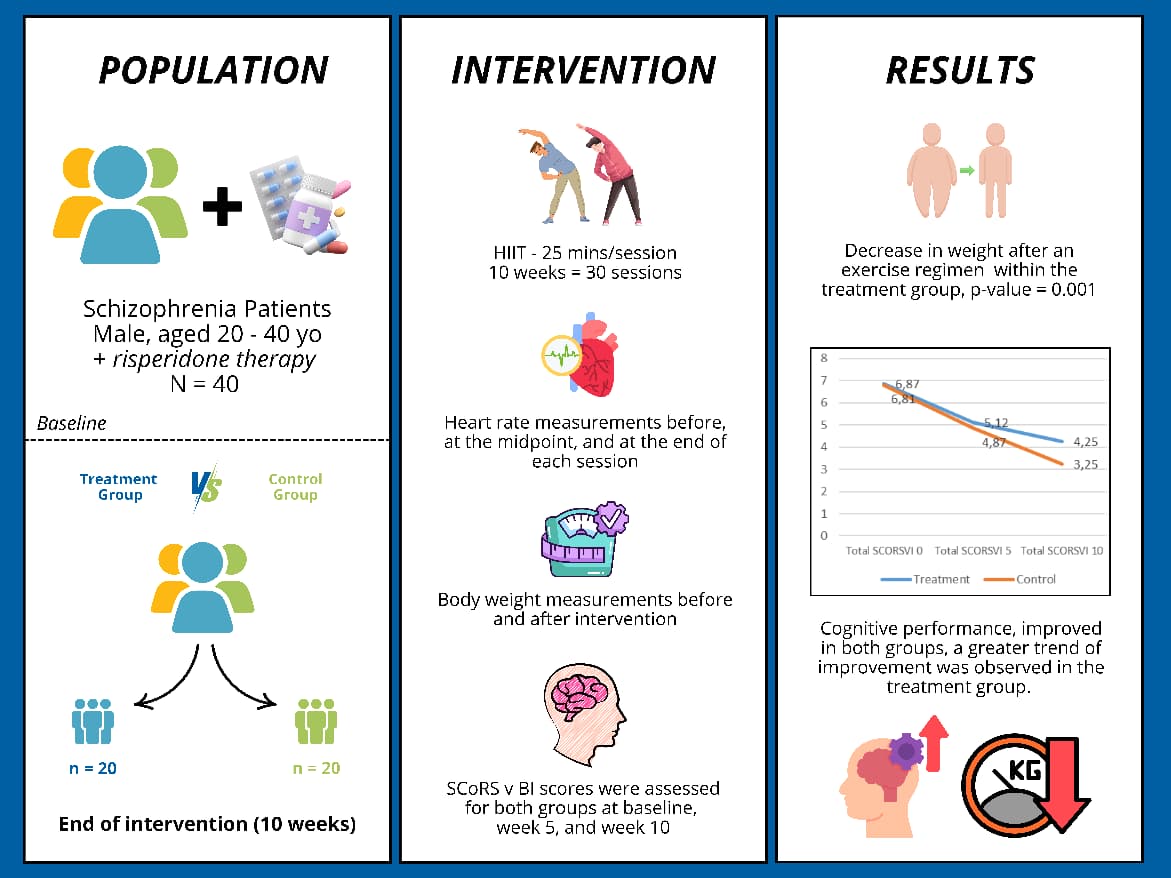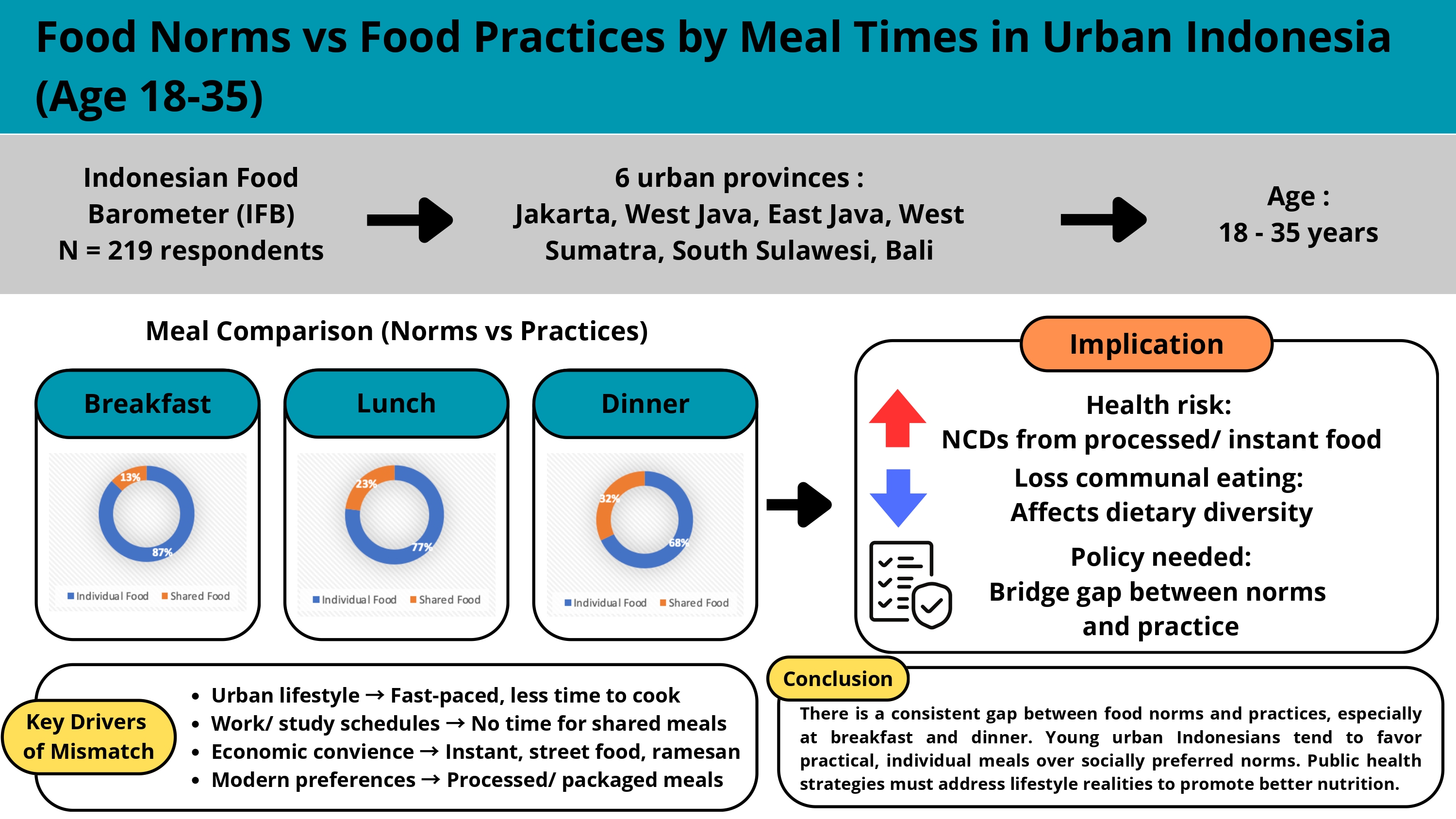HEALTH POLICY TOWARDS OBESITY HAS AN IMPACT ON NON-COMMUNICABLE DISEASES (NCDS) OVER THE LAST 10 YEARS: A BIBLIOMETRIC ANALYSIS
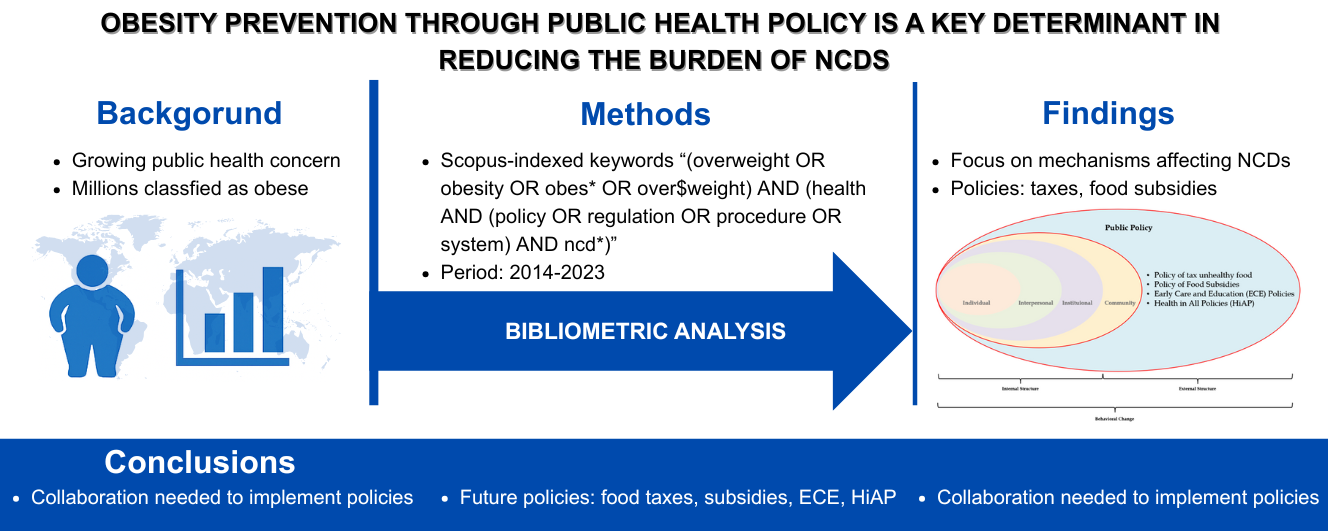
Downloads
The prevalence of obesity has significantly increased, affecting millions of people worldwide. Obesity is a growing public health concern worldwide. According to the statistical data, millions of individuals were classified as obese. Policy plays a crucial role as a macro-level factor in shaping behavioral changes. This study aimed to analyze global trends in health policy research on obesity and its impact on Non-Communicable Diseases (NCDs) from a bibliometric perspective using Scopus-indexed documents. Data analysis methods and visualization techniques were applied to publications from 2014 to 2023 using the keywords (overweight OR obesity OR obes* OR over$weight) AND (health AND (policy OR regulation OR procedure OR system) AND ncd*). RStudio and VOSviewer were utilized for bibliometric publication statistical analysis, resulting in 132 publications from the Scopus metadata. We used bibliometric analysis to examine the published literature and visualize development trends regarding the effects of health policies on obesity. These findings indicate that health policies related to obesity focus on the mechanisms that affect NCDs. The identified policies included taxes on unhealthy foods and food subsidies. Health policies play a crucial role in preventing obesity and reducing its impact on NCDs. Collaboration between the government and various sectors of society is necessary to implement effective policies for the prevention of obesity. Future policies are expected to be adopted by each country regarding unhealthy food tax policies, food subsidy policies, Early Care and Education (ECE) policies, and Health in All Policies (HiAP).
Abafe, E. A., Bahta, Y. T., & Jordaan, H. (2022). Exploring Biblioshiny for Historical Assessment of Global Research on Sustainable Use of Water in Agriculture. Sustainability (Switzerland), 14(17). https://doi.org/10.3390/su141710651
Balasundaram, P., & Daley, S. F. (2025). Public Health Considerations Regarding Obesity. Treasure Island (FL): StatPearls Publishing. https://www.ncbi.nlm.nih.gov/books/NBK572122/
Bauvin, P., Delacôte, C., Wandji, L. C. N., Lassailly, G., Raverdy, V., Pattou, F., Deuffic-Burban, S., & Mathurin, P. (2024). Early prediction of the impact of public health policies on obesity and lifetime risk of type 2 diabetes: A modelling approach. PLoS ONE, 19(3 March), 1–18. https://doi.org/10.1371/journal.pone.0301463
Bertram, T., & Pascal, C. (2016). Early Childhood Policies and Systems in Eight Countries. Early Childhood Policies and Systems in Eight Countries. https://doi.org/10.1007/978-3-319-39847-1
Bombak, A. (2014). Obesity, health at every size, and public health policy. American Journal of Public Health, 104(2), 60–67. https://doi.org/10.2105/AJPH.2013.301486
Buscemi, J., Kanwischer, K., Becker, A., & Fitzgibbon, M. (2014). Society of Behavioral Medicine Position Statement: Early Care and Education (ECE) policies can impact obesity prevention among preschool-aged children. Translational Behavioral Medicine. https://doi.org/10.1007/s13142-014-0297-5
Carvajal-Aldaz, D., Cucalon, G., & Ordonez, C. (2022). Food insecurity as a risk factor for obesity: A review. Frontiers in Nutrition, 9, 1012734. https://doi.org/10.3389/fnut.2022.1012734
CDC. (2016). Health in All Policies. Office of Policy, Performance, and Evaluation Home. https://www.cdc.gov/policy/hiap/index.html#:~:text=Health in All Policies (HiAP,of all communities and people.
CDC. (2022). Consequences of Obesity. Overweight and Obesity. https://www.cdc.gov/obesity/basics/consequences.html
CDC. (2023a). State and Local Strategies. Overweight and Obesity. https://www.cdc.gov/obesity/strategies/index.html
CDC. (2023b). State and Local Strategies. Overweight and Obesity. https://www.cdc.gov/obesity/strategies/index.html
CDC. (2024). Obesity Strategies: What Can Be Done. Obesity. https://www.cdc.gov/obesity/php/about/obesity-strategies-what-can-be-done.html
Dandona, L., Dandona, R., Kumar, G. A., Shukla, D. K., & India State Level Disease Initiative Collaborations. (2017). Nations within a nation: variations in epidemiological transition across the states of India, 1990-2016 in the Global Burden of Disease Study. Lancet (London, England), 390(10111), 2437–2460. https://doi.org/10.1016/S0140-6736(17)32804-0
Di Cesare, M., Sorić, M., Bovet, P., Miranda, J. J., Bhutta, Z., Stevens, G. A., Laxmaiah, A., Kengne, A.-P., & Bentham, J. (2019). The epidemiological burden of obesity in childhood: a worldwide epidemic requiring urgent action. BMC Medicine, 17(1), 212. https://doi.org/10.1186/s12916-019-1449-8
Ellegaard, O., & Wallin, J. A. (2015). The bibliometric analysis of scholarly production: How great is the impact? Scientometrics, 105(3), 1809–1831. https://doi.org/10.1007/s11192-015-1645-z
Fox, A. M., & Horowitz, C. R. (2013). Best practices in policy approaches to obesity prevention. Journal of Health Care for the Poor and Underserved, 24(2 Suppl), 168–192. https://doi.org/10.1353/hpu.2013.0097
Ghani, M., Hurrell, R., Verceles, A. C., McCurdy, M. T., & Papali, A. (2021). Geographic, subject, and authorship trends among LMIC-based scientific publications in high-impact global health and general medicine journals: a 30-month bibliometric analysis. Journal of Epidemiology and Global Health, 11(1), 92–97. https://doi.org/10.2991/JEGH.K.200325.001
Kalamov, Z. Y., & Runkel, M. (2021). Taxation of unhealthy food consumption and the intensive versus extensive margin of obesity. International Tax and Public Finance, 29(5), 1294–1320. https://doi.org/10.1007/s10797-021-09704-y
Kawuki, J., Ghimire, U., Papabathini, S. S., Obore, N., & Musa, T. H. (2021). A bibliometric analysis of childhood obesity research from China indexed in Web of Science. Journal of Public Health and Emergency, 5(2), 1–11. https://doi.org/10.21037/jphe-20-95
Kemenkes RI. (2020). Permenkes RI Nomor 21 Tahun 2020 tentang Rencana Strategis Kementerian Kesehatan Tahun 2020-2024. Kementerian Kesehatan RI, 9(May), 6. https://www.google.com/url?sa=t&rct=j&q=&esrc=s&source=web&cd=&ved=2ahUKEwj45qTkuviCAxX2RmcHHSh-ASA4ChAWegQIBRAB&url=https%3A%2F%2Fperaturan.bpk.go.id%2FHome%2FDownload%2F144824%2FPermenkes%2520Nomor%252021%2520Tahun%25202020.pdf&usg=AOvVaw34le1WsxW7_ISmL
Kiss, A., Fritz, P., Lakner, Z., & Soós, S. (2020). Linking the dimensions of policy-related research on obesity: a hybrid mapping with multicluster topics and interdisciplinarity maps. In Scientometrics (Vol. 122, Issue 1). Springer International Publishing. https://doi.org/10.1007/s11192-019-03293-8
McLeroy, K. R., Bibeau, D., Steckler, A., & Glanz, K. (1988). An ecological perspective on health promotion programs. Health Education Quarterly, 15(4), 351–377. https://doi.org/10.1177/109019818801500401
Micha, R. (2022). Global Nutrition Report. In Global Nutrition Report (Issue June).
Miranti, Y. S., & Nisai, H. (2015). MASYARAKAT SEBAGAI PENCAPAIAN SUSTAINABLE DEVELOPMENT GOALS ( SDGs ) ( Studi Kasus di Finlandia ) THE ROLE OF SOCIAL WORKERS IN ACHIEVING COMMUNITY ( SDGs ) ( Case Study in Finland ). 3.
Omer, T. (2020). The causes of obesity: an in-depth review. Advances in Obesity, Weight Management & Control, 10(4), 90–94. https://doi.org/10.15406/aowmc.2020.10.00312
Peng, W., Chen, S., Chen, X., Ma, Y., Wang, T., Sun, X., Wang, Y., Ding, G., & Wang, Y. (2024). Trends in major non-communicable diseases and related risk factors in China 2002–2019: an analysis of nationally representative survey data. The Lancet Regional Health - Western Pacific, 43, 100809. https://doi.org/10.1016/j.lanwpc.2023.100809
Phelps, N. H., Singleton, R. K., Zhou, B., Heap, R. A., Mishra, A., Bennett, J. E., Paciorek, C. J., Lhoste, V. P., Carrillo-Larco, R. M., Stevens, G. A., Rodriguez-Martinez, A., Bixby, H., Bentham, J., Di Cesare, M., Danaei, G., Rayner, A. W., Barradas-Pires, A., Cowan, M. J., Savin, S., … Ezzati, M. (2024). Worldwide trends in underweight and obesity from 1990 to 2022: a pooled analysis of 3663 population-representative studies with 222 million children, adolescents, and adults. The Lancet, 403(10431), 1027–1050. https://doi.org/10.1016/S0140-6736(23)02750-2
Ramos, M. F., Weber, J., Thompson, J. A., Werk, L., Shuell, J., Woods, K., & Bamdad, T. (2021). Evaluation of “Healthy Way to Grow”: An Obesity Prevention Program in Early Care and Education Centers. Early Childhood Education Journal, 49(4), 553–566. https://doi.org/10.1007/s10643-020-01102-z
Ri, M., Aikou, S., & Seto, Y. (2018). Obesity as a surgical risk factor. Annals of Gastroenterological Surgery, 2(1), 13–21. https://doi.org/10.1002/ags3.12049
Sikaris, K. A. (2004). The clinical biochemistry of obesity. The Clinical Biochemist. Reviews, 25(3), 165–181.
Temple, N. J. (2023). A Proposed Strategy against Obesity: How Government Policy Can Counter the Obesogenic Environment. Nutrients, 15(13). https://doi.org/10.3390/nu15132910
Tirthani, E., Said, M. S., & Rehman, A. (2024). Genetics and Obesity. StatPearls Publishing. https://www.ncbi.nlm.nih.gov/books/NBK573068/
United Nations. (2022). World Population Prospects: The 2022 Revision (Population, Vol. 2). United Nations, Department of International, Economic and Social Affairs.
WHO. (2014). Health in all policies (HiAP) framework for country action. Health Promotion International, 29, i19–i28. https://doi.org/10.1093/heapro/dau035
WHO. (2018). Key Learning on Health in All Policies Implementation from Around the World. Information Brochure, 12. https://apps.who.int/iris/bitstream/handle/10665/272711/WHO-CED-PHE-SDH-18.1-eng.pdf
WHO. (2023). A primary health care approach to obesity prevention and management in children and adolescents: policy brief. Publications. https://www.who.int/publications/i/item/9789240072671
WHO. (2025). Policy and strategy. Policy and Strategy. https://www.who.int/europe/teams/nutrition-physical-activity-and-obesity/policy-and-strategy
World Health Organization. (2023). World health statistics 2023: monitoring health for the sdgs, sustainable development goals. In The Milbank Memorial Fund quarterly (Vol. 27, Issue 2).
Zamanian-Azodi, M., Vafaee, R., Azodi, T., Omidi, R., Gilanchi, S., Azizi-Jalilian, F., & Khodarahmi, R. (2013). Molecular approaches in obesity studies. Gastroenterology and Hepatology from Bed to Bench, 6(Suppl 1), S23-31.

This work is licensed under a Creative Commons Attribution-NonCommercial-ShareAlike 4.0 International License.
- MEDIA GIZI INDONESIA Journal is the copyright owner of all materials published on this website.
- The formal legal provisions for access to digital articles of this electronic journal are subject to the terms of the Creative Commons Attribution-NonCommercial-ShareAlike license (CC BY-NC-SA 4.0), which means that MEDIA GIZI INDONESIA Journal and readers reserve the right to save, transmit media / format, manage in database, maintain, and publish articles as long as it continues to include the name of the Author.
- Printed and published print and electronic manuscripts are open access for educational, research and library purposes. In addition to these objectives, the editorial board shall not be liable for violations of copyright law.


2.png)















